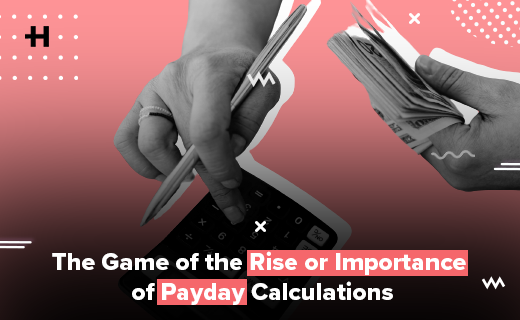‘Employees’ are the biggest asset of any organization, But satisfied and happy employees are the vital jigsaw part of organizational success. Hence, it becomes the top priority of an organization to keep their employees motivated which leads to high and infectious dedication toward their work. And what best can be a motivating factor for the employees than a ‘Salary Rise’?
In today’s era of loving your work and following one’s passion, it is equally important for corporate HR to walk the extra mile for making an inseparable connection with the employees. Of course, along with salary rises, non-salary perks are also important on a regular basis to show the employee how valuable their contribution is to the company. Such pay hikes can boost the morale of the employees and encourage them to work hard in achieving the common organizational goal. Hence, pay hikes are the most crucial part of a corporate HR’s agenda toward employee benefits.
But, do you wonder how these HRs calculate the hike for the employees? Then here, are the answers to all your questions on how to calculate the salary hikes of the employees to keep a healthy yet competitive atmosphere in your organization, which will act as a catalyst in achieving organizational success.
Table of Contents
The Old School Calculation:
The basic and the old school calculation process by any organization is to deduct the old salary of an employee from the new salary figures then divide the difference by the old salary and lastly multiply it by 100.
However, such calculations are executed when HR considers the basic cost of living, the longevity of service, or simply dissuading employees from leaving the organization.
The Bell Curve Calculations:
In this system of employee performance calculation, they are evaluated by ranking them into a bell-shaped graph varying from worst to best performers. In this appraisal, method managers have to compulsorily rank the employees in terms of low, medium, and high performers. The usual distribution for the bell curve calculation is:
Low performers -10 percent
Medium performers – 70 percent
High performers – 20 percent
A bell curve calculation helps to identify the star performers of each team and offers better rewards for them as compared to the others.
The Calculations on Education and Experience:
The level of an employee’s education and experience also plays a fundamental role in calculating the salary rise. For instance, a person who is a management graduate from IIM with an industry-relevant experience of 5-6 years will draw more hike as compared to one from a normal institution with less or more years of industry experience.
Hence, the pay scales, are equally dependent on the quality of education and relevant industry experience.
The Calculations based on Market Inflation:
It is vital for companies to offer salaries at par with industry standards and in sync with market inflation. As with the growing inflation, the purchasing power of employees declines, hence the organization has to consider the inflation percentage while offering the salary hike to the employee increasing their purchasing power to meet their needs.
The Calculations based Suggestions from Team Leaders:
Team leaders, managers, or supervisors are the first points of contact for the employees. Hence, there is no one better than them to evaluate the employee’s overall performance. Hence, it’s better for HR to discuss with them before calculating the salary hikes and revisions.
The Calculation based on Self Evaluation:
Every employee is the best judge of their performance and work. Hence, it is also important for corporate HR to have open communication with employees via self-evaluation or assessment methods.
Through this method, the employees can review their work and performance on a scale of 1-10 (where 1 is low and 10 is high) as it gives the HR a clear picture of their contribution towards the department and the company.
Conclusion
However, it is also important for corporate HR to consider the fact that salary hikes are the most delicate matter and has to be addressed with utmost care and caution. As any mishap in these calculations can result in the company losing the most valued employee. Hence, the company should always strike a balance by giving equal weightage to the salary and non-salary perks as the non-salary perks play a significant role in employee retention at the workplace.




